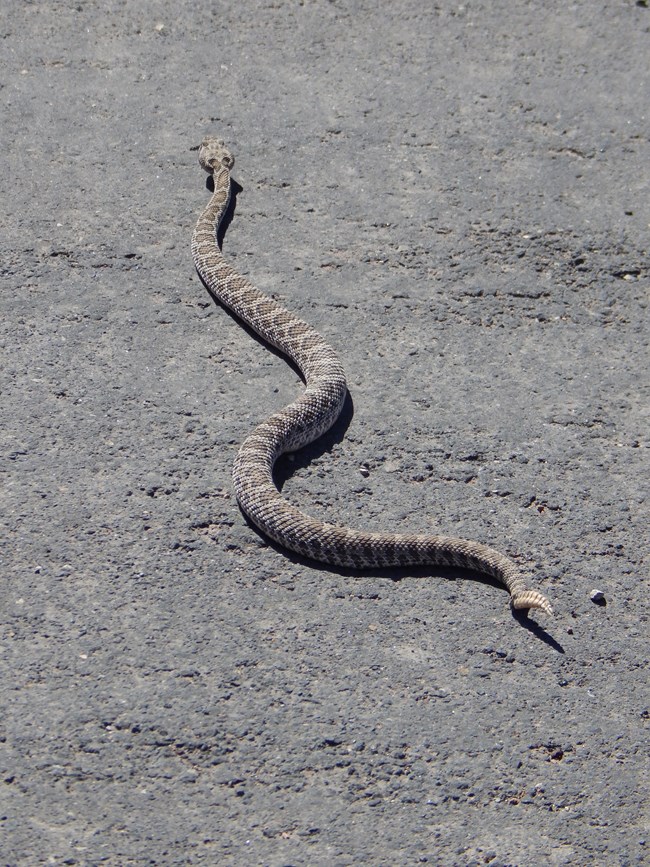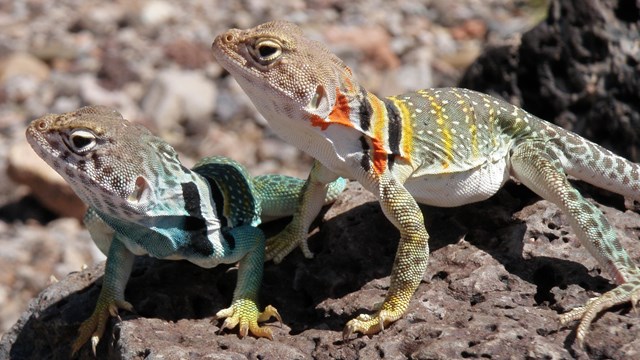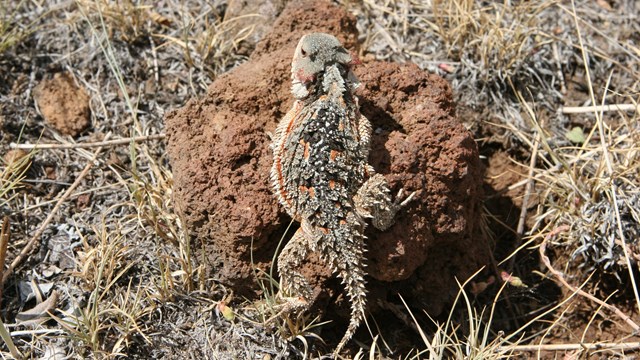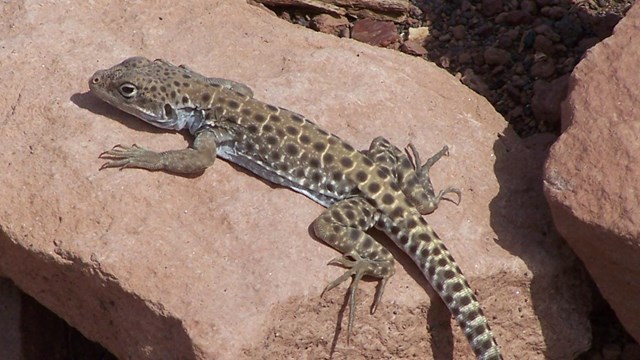
NPS/L.Carter LizardsThe most common lizard of the monuments is the Side- blotched Lizard. This small dark green or grayish lizard has dark blue or black spots on each side behind the front legs. The male has a blue speckled band down its back. The Side-blotched Lizard eats Insects, ticks, and scorpions.The large bright green lizard often seen around the ruins and on rocks, particularly near Lomaki Pueblo, is the Collared Lizard. The major distinguishing feature is the double black collar around its neck. Sometimes the Collared Lizard can be seen running on its two long hind legs. Medium-sized lizards, snakes, flowers, leaves, and insects are all a part of the Collared Lizard's diet. The Horned Lizard, or "Horny Toad," is common but is not often seen. It has a round, flat body which blends well with its surroundings. Its diet consists exclusively of ants. The species in our area bears live young. Whiptails are fast-moving lizards with very long tails. Most are a mottled black or brown color, sometimes with long yellow stripes, and they move with a jerky motion when disturbed. The Western Whiptail is our most common species. Another species, the Plateau Whiptail, has no males. It lays unfertilized eggs which invariably hatch into females. The Desert Spiny Lizard is an insect eater. This lizard has a stout spiny body with a black wedge on each shoulder. It has a tendency to bob up and down when its territory is disturbed. A striking subspecies is the Orange-headed Desert Spiny Lizard; its head is very similar in color the local sandstone. SnakesGopher Snakes are often seen in Wupatki Pueblo. This rodent-eating snake is yellow with large black or brown blotches. When threatened, it will mimic the behavior of a rattlesnake, hissing, coiling, and vibrating its tail. Gopher Snakes are not venomous. They kill their prey by constriction and eat it whole.The Common Kingsnake is easily identified by its distinct black and yellowish bands. A large non- poisonous snake, it feeds on lizards, frogs, small mammals, birds, and other snakes, including rattlesnakes. Rattlesnakes are the only dangerous snakes found in the area. Two local varieties are the Arizona Black Rattlesnake and the Hopi Rattlesnake, a small pinkish snake used in a dance ceremony. Rattlesnakes have a temperature-sensitive pit on each side of the face which helps them to locate their prey. Rattlesnakes bear live young. Please view all the lizards and snakes that make their homes here from a distance. As at all National Parks, the animals and plants at Wupatki are protected by federal law. Select a Park:Select a Species Category (optional):
Search results will be displayed here.

Eastern Collared Lizard
The eastern collared lizard can be extremely fast moving, and is sometimes seen standing on two legs. 
The Greater Short Horned Lizard
The Greater Short Horned Lizard blends into the landscape with it's mottled brown coloring and bumpy scales. 
Long-nose Leopard Lizard
The Long-nosed Leopard Lizard is one of the largest species of lizards in the monument but it not often seen. |
Last updated: March 15, 2024
